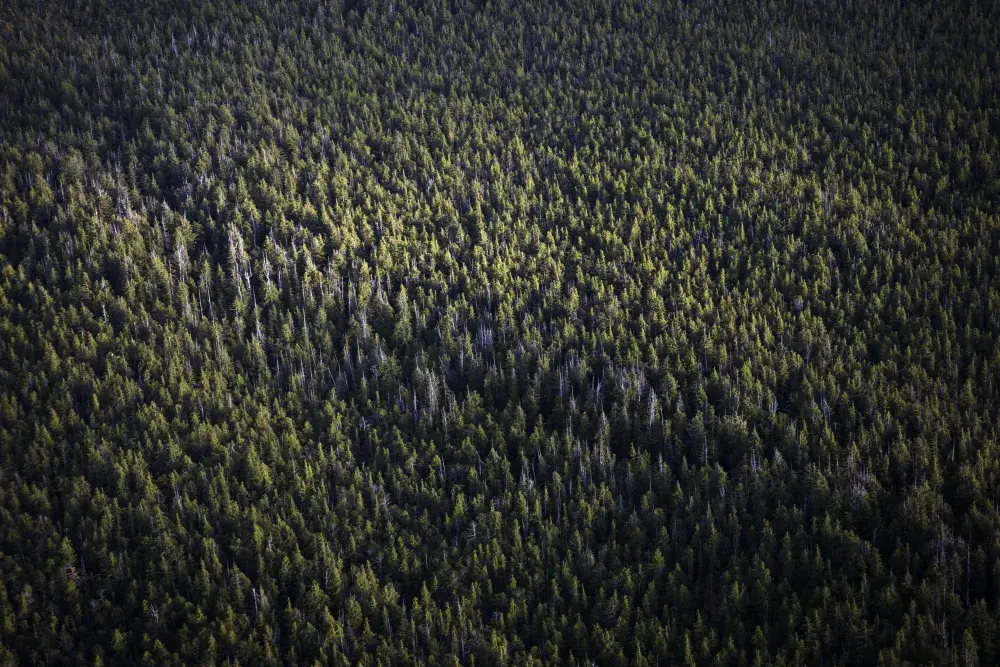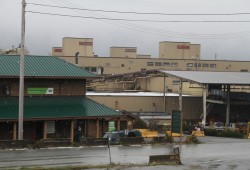Ideas will be critical for First Nations and forestry companies to make the best use of what’s left to cut, says those behind an upcoming conference being held in Port Alberni this September.
Robert Dennis Sr., a former chief councillor of the Huu-ay-aht First Nations, is on the planning committee of the Indigenous Forestry Conference, which is scheduled for Sept. 10 and 11 at the Best Western Barclay Hotel in Port Alberni. He’s found that forest stewardship has become a larger consideration among those in the industry, “meeting the present needs without compromising the needs of future generations.”
“The days of huge volumes of timber being removed from our territories, I think that’s a thing of the past,” said Dennis. “I do know there’s a shift here in looking at the potential opportunities in second growth and removing our reliance on old growth.”
The conference plans to bring together 175 delegates from companies and Indigenous communities across British Columbia, including the hosting Tseshaht First Nation. The conference lead Trevor Cootes hopes that the event will enable those present to collaboratively find economic opportunities in forestry.
“Hopefully we have some tangible outcomes that come out of it - that we could have everybody working together, moving forward to close the economic gap for First Nations in being able to participate in forestry and the economy,” he said.
Cootes was born and raised in Port Alberni, a community that has been subject to the industry’s monumental shift over the past few generations. Most of the sawmills that once lined the small city’s waterfront have closed, including Western Forest Products’ Somass Division, a facility specializing in old-growth cedar that shut down in early 2017 and is now being demolished. That left over 70 employees out of work, and in the fall of 2022 WFP stopped running the Alberni Pacific Division mill at the south end of the city, affecting another 100 jobs.
But opportunities have arisen in recent years as well. Last year Huu-ay-aht announced becoming the majority owner of TimberTiles, a manufacturing outfit in Port Alberni that used second-growth hemlock to produce wood tiles for interior spaces. TimberTiles is set to be represented at the conference, as is Kalesnikoff, a forestry company with over 80 years of family-run experience in the West Kootenay region.
Like many from his generation, Dennis worked as a logger when he was younger. But the participation of First Nations people in the West Coast forestry industry declined over the years, as governments were pushed to reconsider how much of the forest could be harvested.
“The desire for the province to conserve areas, that had a lot to do with that,” he said. “That resulted in layoffs.”
In recent years this trend has continued – particularly in respect to the amount of old growth being cut. Since 2021, B.C.’s overall harvest has declined from 45 million cubic metres to 32.4 million last year. And from 2015-22 old growth harvesting dropped 52 per cent, falling from 66,526 hectares of forest to 33,000, according to the Ministry of Forests.
Meanwhile the amount of area protected has grown. Since November 2021 almost 2.5 million hectares has been deferred from harvest or declared permanently protected, adding to the 3.8 million hectares that the province states were already conserved. Most recently a large proportion of Clayoquot Sound was added to this when 76,000 hectares of conservancies, covering almost 60 per cent of the existing tree farm licence, were declared protected in June.
“Forestry has changed substantially,” commented Cootes. “Climate change has really shown itself in the last few years in how that had changed our view in how we manage our lands. It’s naturally evolving and coming to a place where First Nations want to participate more.”
In recent years the Huu-ay-aht have stepped in to claim a larger stake in forestry within its territory, making the industry account for most of the annual revenue generated by the First Nation’s group of businesses. HFN Forestry LP now manages four tenures, private lands, a woodlot licence, a community forest agreement, treaty settlement lands and a log sorting yard. Also notable is C̕awak ʔqin Forestry, a partnership between a Huu-ay-aht company and Western Forests Products, that manages TFL 44, a vast section of Crown land south of Port Alberni and Great Central Lake.
Also set to be at the conference are representatives from the Ka:'yu:'k't'h'/Che:k'tles7et'h' First Nations. After finding that its forestry tenure was too small to be profitable in 2021, the First Nation’s forestry company approached others in its territory to share tenures. This resulted in Tiičma Forestry’s acquisition of a licence for Crown land from Interfor, adding an additional annual allowable cut of 104,000 cubic metres and enabling the First Nation to increase the portion of Ka:'yu:'k't'h'/Che:k'tles7et'h' territory under its own forestry management from six to 30 per cent.
Cootes has seen an overall shift in B.C. amid things like Victoria’s passing of the Declaration of the Rights of Indigenous Peoples Act.
“It’s created opportunity now for First Nations to seize an opportunity and look at things in a different way,” he said.



